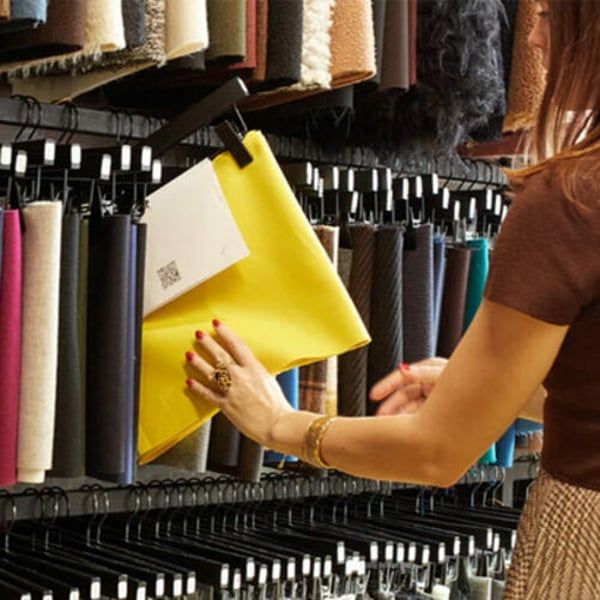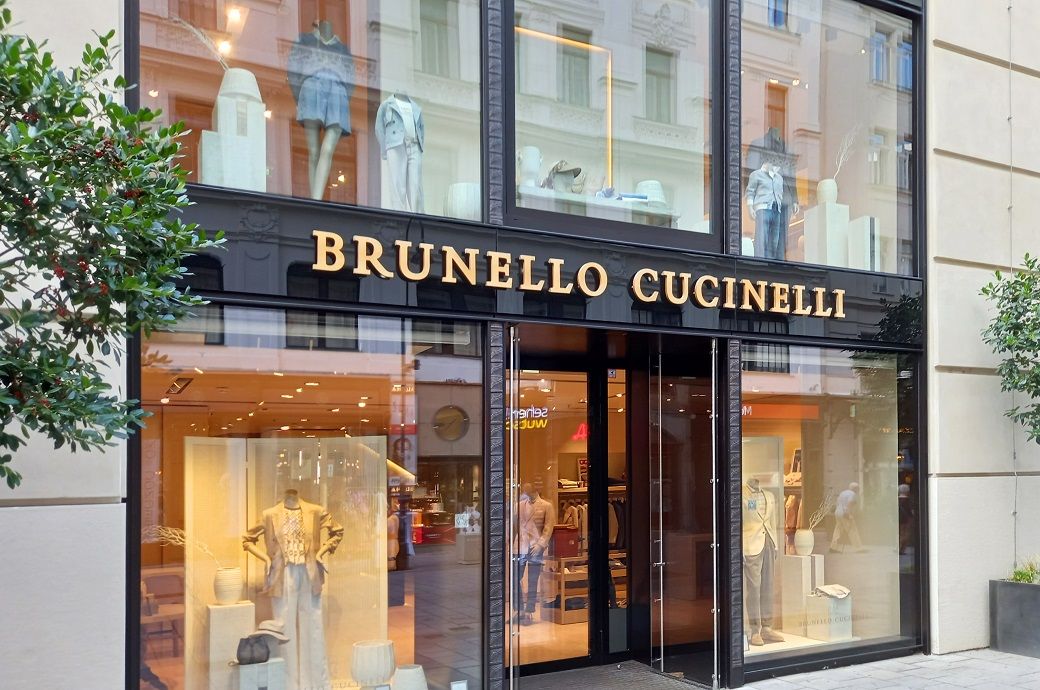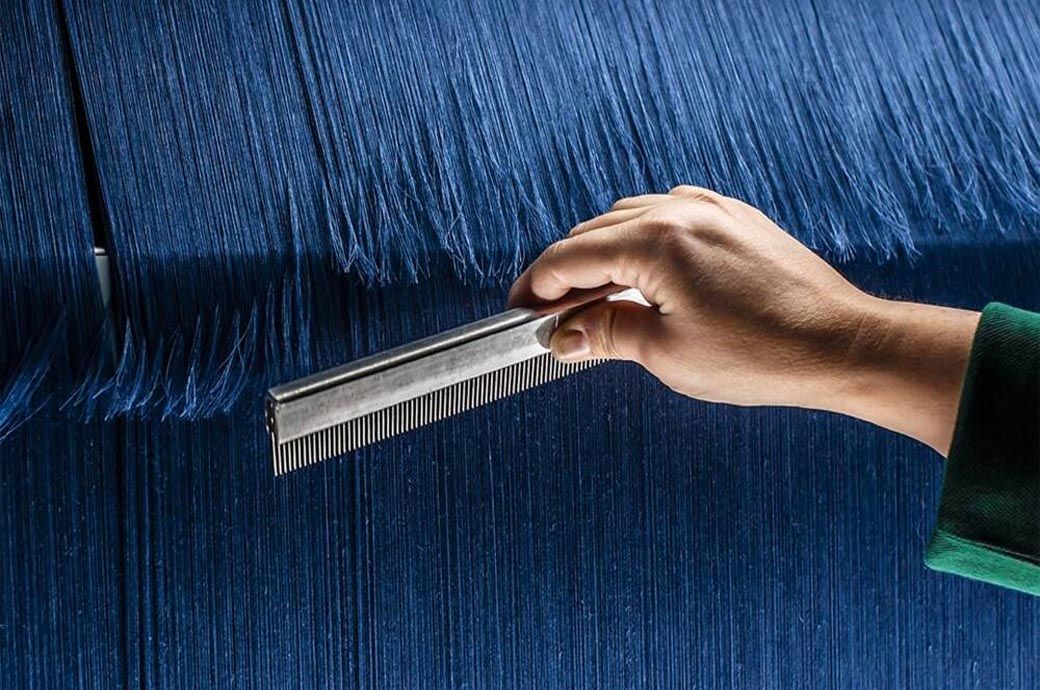Translated by
Nicola Mira
Published
March 18, 2024
In the last five years, the exploitation of stocks of unused materials has progressively become an element of the strategies deployed by brands and fashion designers. A sustainable approach that has fostered the growth of an entire ecosystem of start-ups and operators, whose existence is proof of the growing popularity of these materials as alternatives to recycling.
Buried treasures can be found in the warehouses of fashion brands and big houses. Materials abandoned during the preparation of a collection, or due to a change in strategy, that were never transformed into finished products. Adapta was created in Paris in 2018 with the aim of finding buyers for unused leather inventory from major brands. The company currently has 800 client brands, but in the beginning it had to convince the industry that it was not going to supplant existing producers.
“With idle stock, we are not undermining the business of traditional suppliers,” said Virginie Ducatillon, founder of Adapta. “Inactive stock is available as seasonal one-off products as it cannot be replenished, while traditional suppliers carry permanent collections and can replenish their customers,” she added.
Atelier des Matières was founded in 2019 by Chanel and began selling unused fabrics and materials that quickly became popular among emerging brands and designers. “Given incentives, new regulations, increased environmental awareness and material shortages, using idle stock has become an obvious solution for a young generation of designers,” said Nativity Rodriguez, CEO of Atelier des Matières.
Romain Brabo, co-founder of Nona Source in 2019 with the backing of the LVMH group, has a more radical vision. Between brands keen to get rid of unused inventory and emerging designers looking for new materials, Brabo believes idle stock is ushering in a whole new way of designing. “It's a paradigm shift, with designers asking themselves how to create from what they have at their disposal in terms of materials, colors and volumes,” he said.

Eliminating unused inventory is nothing new. Many companies have been operating in this specialized business for a long time. They mostly buy by the pound and sell to the highest bidder, a practice that poses several problems for labels, such as a restricted range of options and a lack of traceability. Hence the growing success of start-ups such as Adapta, Nona Source, Atelier des Matières, and local companies such as, in France, Feat Coop, which has been selling inactive shares since 2022 in the Auvergne-Rhône-Alpes region, and Uptrade, which first launched its fabric range in 2021.
New mentality
A new mindset is gaining ground among even the most established brands, eager to reduce the use of unused materials. “Record labels are paying more and more attention to this issue,” says Ducatillon. “We are witnessing fewer excesses, although they still sometimes occur. We recently had the case of 1,800 square meters of unused smooth black lambskin. The most common thing is that we find 100 square meters of the same color. But these cases are becoming the exception,” he added.
There is a growing understanding of these issues, reflected in the inquiries received by companies selling dormant shares. “A few years ago, we were contacted mainly by true believers, who made it a mission. [to use dormant stock]. Today we are receiving inquiries from a new type of client,” said Rodríguez.

In 2022, fashion brands had to deal with rising material production costs and, in 2023, reduced consumer spending on clothing. Two factors that have prompted them to rationalize the supply of materials. Does this mean we can expect idle reserves to be gradually depleted? The industry does not believe in this scenario.
Will inactive stocks disappear?
“When developing a collection, [labels] In fact, we start the materials production phase before the items are presented in the showrooms, so that they can quickly reach the stores,” Ducatillon said. “However, items may be canceled after they have been presented in the showrooms. Sometimes entire lines are archived. All this means that materials are produced uselessly,” he added.
Brabo echoed Ducatillon's observation. According to him, leftovers are an inevitable byproduct of the manufacturing process. “When [labels] place orders of certain volumes, there is always a small amount left over. I need 300 meters but I ask the supplier for 500 meters. The worst scenario is when the material becomes unused. Record labels are then faced with the challenge of taking advantage of their own excess inventory or finding buyers for excess volumes,” says Brabo.

“If there was less idle stock, it would be excellent news for the entire industry. However, even if we get to this point, there is always the problem of fabric cuts, even when patterns are shaped to optimize results,” Rodríguez said. As always, labels and fabric manufacturers need to adapt their model to existing conditions.
Incentives and profitability
Ducatillon believes that if sustainability had not become a pressing issue, idle stock would not have been given as much attention as it is now. “We are fighting to promote the reuse of materials with industry associations and the government,” Ducatillon said. “All existing incentives and subsidies are aimed at recycling. That is why we are campaigning to encourage companies to take advantage of the materials they have available. Dormant stocks are an industry blind spot, but they are increasingly a problem,” he added.

Recycling is also being incorporated into the business models of companies that sell idle stock. A year ago, Nona Source partnered with Weturn to create a first range of recycled textiles under the MT brand. Idle stock only represents a third of the Atelier des Matières' business. The rest is divided between the recycling of professional clothing and PPE, and the recycling and upcycling of fabric scraps.
The existence of different business models raises the question of how profitable the dormant stock sector is. The Atelier des Matières has around 15 employees and is also thinking about expanding into home decoration by offering a range of recycled technical materials. Rodriguez said the company is “heading toward” profitability.
Adapta, which has six employees, is managing to balance its accounts and is currently working to promote its products to brands and designers outside France. Nona Source has 17 employees and told FashionNetwork.com that she is also balancing her books and preparing to launch a wide leather range in April. In other words, everything indicates that the dormant stock sector will prosper for some time.
Copyright © 2024 FashionNetwork.com All rights reserved.












